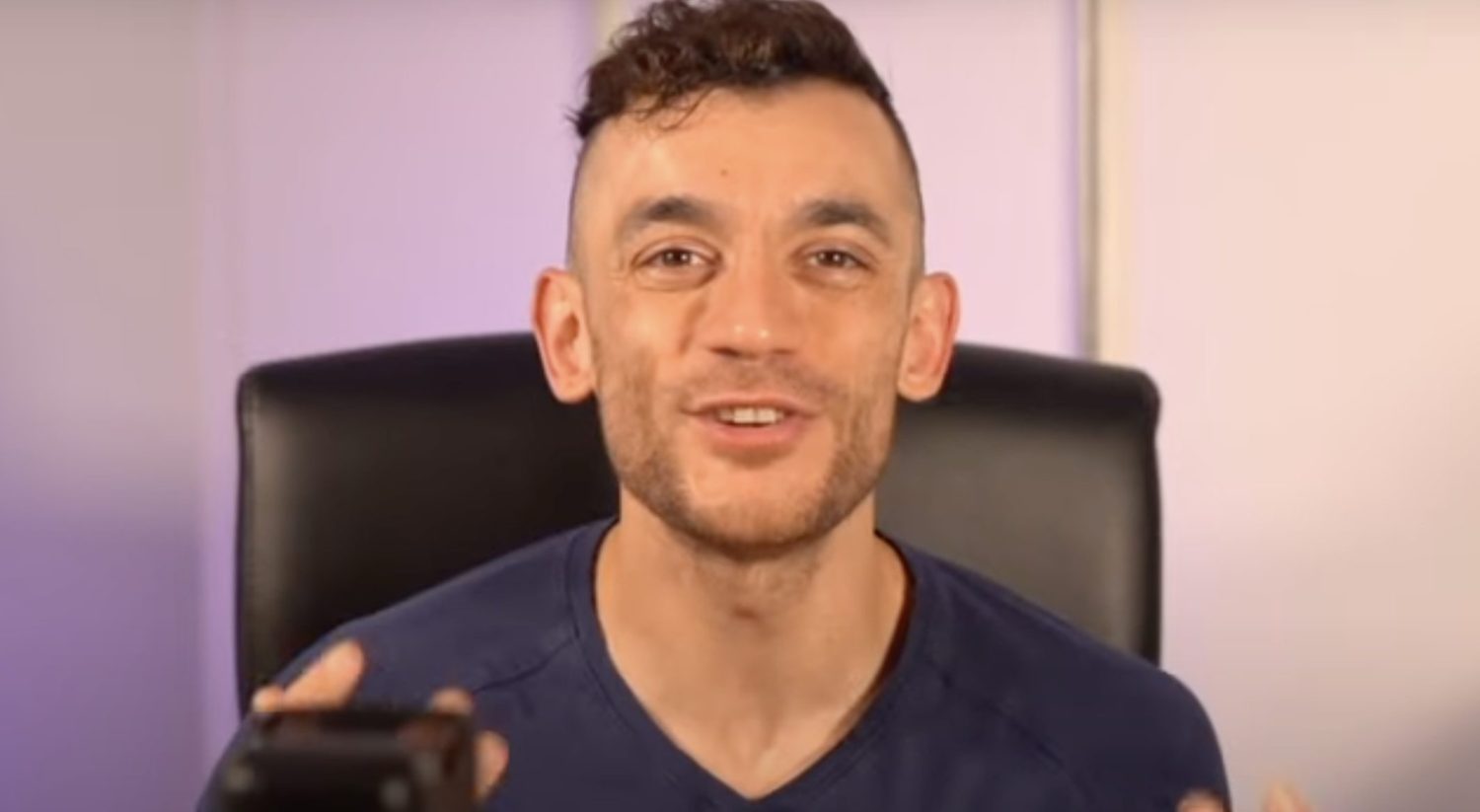Get ready to breathe new life into your YouTube Shorts! By utilizing AI, you can improve your content strategy, boost viewer engagement, and skyrocket your channel to new heights. Let’s dig into the new era of artificial intelligence in your YouTube Shorts creation! Using AI for YouTube Shorts is significant as it can help creators produce more engaging and optimized content, potentially increasing viewer interaction and monetization opportunities.
Getting Started with AI for YouTube Shorts
Adding AI to your YouTube Shorts can change how you generate content, promising efficiency and quality in equal parts. This section will address crucial components like setting up your AI article software, selecting your ideal source platform URL, and the art of customizing content for maximum user engagement.
Setting Up Your AI Article Software
Setting up your AI article software, a critical first step in launching your AI for YouTube Shorts is a process that ensures your content is thoroughly researched and optimally presented. With deep learning algorithms, AI article software, such as Jasper or Article Forge, can take keywords related to your shorts and generate unique, SEO-optimized content in minutes.
For instance, if your YouTube short is about DIY crafts, the software can generate an article covering the best materials for beginners, advanced craft techniques, and top craft trends. Start by inputting your targeted keywords and allow the software to scrape the internet for the most relevant information.
AI tools will provide a streamlined process, minimizing time spent on research while maximizing the quality and relevance of your content. Using AI in this way creates a seamless transition between content creation and posting, thus improving the efficiency of your YouTube Shorts strategy.
- Setting up AI article software, such as Jasper or Article Forge, to assist with research and preparation of SEO-optimized content is a key first step in launching AI for YouTube Shorts.
- Start by inputting specific keywords related to your shorts, then allow the software to scan the internet for the most relevant information.
- These AI tools can streamline the content creation process, improving efficiency and the quality of content for your YouTube Shorts strategy.
Choosing Your Source Platform URL
When starting with AI for YouTube Shorts, choosing your source platform URL is crucial.
This is where you will upload your content for AI processing and further distribution.
For instance, many users prefer to use YouTube as their source platform because it allows them to easily embed videos on various digital platforms and it brings advantages such as maximum visibility due to YouTube’s large user base, intuitive interface, and strong support for different video formats.
Moreover, integration with AI tools can also provide additional benefits like automated captioning or tagging.
While selecting your source platform URL, ensure it aligns with your target audience’s preferences and the technical requirements for AI integration to promote effortless content creation and distribution.
- Select your source platform URL carefully as it is crucial while initializing AI with YouTube Shorts.
- Ensure the chosen platform aligns with your target audience’s preferences and technical requirements for AI integration for seamless content creation and distribution.
- Leverage the benefits of integration with AI tools such as automated captioning and tagging.
Creating Customizations for Your Content
Customizing your content for YouTube Shorts using AI tools can help cater to your specific audience effectively. Experimental evidence reveals that videos personalized based on viewer preferences prompt higher user engagement.
For instance, Vid2vec is a cutting-edge tool that leverages AI to analyze your video content and subsequent viewer interactions, providing insights that can help shape your Shorts. Consequently, you can leverage this data to tailor your video elements – including length, tone, and subject matter – aligned to audience preferences.
Moreover, tools like IBM’s Watson AI can help analyze sentiment, further steering your customization strategy. Remember, a smooth transition from one Short to another keeps viewers hooked, and AI tools can help achieve this seamless flow by recommending logical content sequences based on viewer behavior.
Thus, capitalizing on AI for content customization can influence viewer retention and overall channel success.
Customize your YouTube Shorts
Unleashing the enthusiast videographer within, YouTube Shorts can maximize your content’s reach with the right optimizations. This section uncovers ways to pick the ideal content, smoothly share your URL, and make all the right customizations to make your digital storytelling venture succeed.
Choose the suitable YouTube Shorts content
When selecting suitable YouTube Shorts content, ensure you adhere to YouTube’s content guidelines and prioritize your audience’s preferences and interests.
As we observe the Shorts that gain traction, they often deliver engaging, entertaining, or useful information in a concise format.
Consider successful examples such as brief music performances, punchy comedy skits, or quick DIY tutorials.
Further, data from YouTube’s analytics can provide insights into what resonates with your audience, aiding in content selection.
Remember, each Short should contribute to a cohesive online presence, aligning with your brand and overall content strategy, creating a smooth transition for your audience from one Short to another.
- Adhere to YouTube’s content guidelines while preparing YouTube Shorts, prioritizing the audience’s preferences and interests.
- Aim to deliver engaging, entertaining, and useful information in a concise format- the key to gaining traction with YouTube Shorts.
- Utilize data from YouTube’s analytics to develop content that resonates with the audience.
- Strive for each Short to contribute to a cohesive online presence, aligning with your brand and overall content strategy.
- Aim for a smooth transition for your audience from one Short to another, creating a seamless viewer experience.
Input your YouTube Shorts URL
When creating and customizing your YouTube Shorts, it’s essential to properly input your YouTube Shorts URL. This is the digital address that directs viewers directly to your video content, serving as a crucial component for sharing and promoting views.
For example, after uploading your YouTube Shorts, direct viewers to your video by adding the video’s URL to your channel or social media platforms, enhancing the reachability and user accessibility to your content. This URL, seen on the search bar of your internet browser when the YouTube Short is opened, is exclusive to your particular short video, meaning it does not change or link to other videos.
Hence, ensuring the correct input and usage of the YouTube Shorts URL can lead to a significant increase in views and user engagement. Remember, the smoother navigation is, the better the user experience, which can eventually leverage your YouTube Shorts success.
- It’s vital to correctly input your YouTube Shorts URL during the creation and customization process, as this digital address will direct viewers directly to your video content and is a key element in sharing and promoting views.
- After uploading your YouTube Shorts, add the video’s exclusive URL to your channel or social media platforms to improve reachability and accessibility to your content.
- Ensure correct input and usage of the YouTube Shorts URL to enhance user engagement and increase views. A smoother navigation system can lead to a better user experience and contribute to the success of your YouTube Shorts.
Select the appropriate customizations for your article
When tailoring your YouTube Shorts, it’s essential to be mindful of the customizations that will most effectively deliver your content in a way that engages your viewers. Consider altering video speed, overlaying music, or adding text to enhance the viewer’s grasp of your message.
For instance, modifying video speed can assist in highlighting critical moments, while carefully selected music can set the mood for each segment. Text overlays should not be overlooked; they can guide viewers, emphasize significant points, or even provide interpretative support for audio-visual material.
Adequate transition, achieved with logical sequencing and the use of transitional effects, also aids in maintaining the coherence of your story or argument throughout the video. Choosing the right mix, tailored to your content and target audience, can immensely increase the effectiveness and appeal of your YouTube Shorts.
- Consider different customizations for your YouTube Shorts such as altering video speed, overlaying music, and adding text to make content engaging and understandable for viewers.
- Emphasize critical moments by altering video speed, setting the mood for each segment using suitable music, and using text overlays for guidance, emphasis, or to provide support for audio-visual material.
- Ensure logical sequencing and use transitional effects to maintain the coherence of your story or argument throughout the video. Choose the right mix of modifications according to your content and target audience for maximum effectiveness and appeal.
Generate your Article
- ‘Getting ready for content creation might feel daunting, but its true impact unfolds when strategically planned. This section will take you through key preparation steps, providing a solid foundation for your content generation processes.’
- ‘Turning ideas into compelling content isn’t as spontaneous as it appears; it’s a meticulous and calculated process. We’ll dissect this complex journey in this section, providing insights on efficiently executing the content generation process.’
- ‘The work doesn’t end when the final full stop is placed; there’s more to successful content generation than just writing. In this section, we’ll explore the essential post-generation actions that ensure your content accomplishes its intended purpose.’
Preparing for Content Generation
Embarking on the journey to generate content for an article needs comprehensive planning and robust strategizing. Successful content generation starts with a concrete understanding of the subject matter, backed with ample research from reputable sources to establish credibility and strengthen your points.
This can be achieved by gathering relevant data, statistics, and case studies, quoting industry experts, and maintaining reader interest and engagement. Once your research phase is concluded, a brainstorming session is a must to have key ideas and structure your article.
This process provides a roadmap for the smooth transition of ideas, as you outline each section of your content, ensuring your narrative flows seamlessly from one point to the next. Equal parts research, creativity, organization, and content generation can pull your reader in, making your article informative and compelling.
Executing Content Generation Process
Implementing the content generation process effectively is key to producing a high-quality article. The process begins with a thorough study of the topic, which involves conducting comprehensive research, reading recent articles, and considering relevant statistics and case studies.
This foundational step empowers the writer with a firm grasp of the subject matter and facilitates the formation of an original perspective. Following this, creating a detailed content outline can help streamline the writing process, ensuring all pertinent points and insights are covered while avoiding a chaotic approach.
After initial drafting, proofreading, and revision are necessary, employing tools to eliminate grammar errors and tweak phrasing for maximum impact. With careful execution of the content generation process, a writer ensures informative, engaging, and high-quality output.
- Conduct a thorough study of the topic which involves comprehensive research, reading recent articles, and considering relevant statistics and case studies.
- Create a detailed content outline to streamline the writing process, ensuring all pertinent points and insights are covered.
- Perform proofreading and revision after the initial drafting, employing tools to eliminate grammar errors and tweak phrasing for maximum impact.
Post-Generation Actions
After generating your article, certain post-generation actions are essential to enhance the quality of your work. Editing, for instance, is a critical step, where you scrutinize your text and rectify grammatical errors, redundant phrases, and typographical mistakes, enhancing the asset’s readability and credibility.
For example, according to the Harvard Business Review, firms with meticulous editing processes eliminate 30% more errors in their texts than those without, reflecting a polished brand image. Proofreading, another key strategy, allows you to double-check facts, figures, names, and other specific references, ensuring accuracy.
Tools like Grammarly or Hemingway Editor can be beneficial here, helping you maintain a consistent style, clarity, and professional tone. So remember, your work doesn’t just end in typing the last word of your draft; refining it post-generation could be what elevates your article from being good to exceptional.
Automate your Content Creation
Learn to take advantage of technology to streamline your content creation strategy, transforming it into a well-oiled machine. Dive into the details of understanding automation features, setting up intelligent automation, and configuring auto-draft or publish options as we redefine efficiency in content production.
Understanding Automation Features
Understanding automation features is the first crucial step toward streamlining your content creation process. These features, often embedded in various AI-powered tools and platforms, can help automate several time-consuming tasks.
For instance, tools like Hootsuite or Buffer allow social media post scheduling across diverse platforms, freeing your time from manual posting. Feature-rich platforms like MarketMuse can enhance your content strategy by analyzing top-performing content in your niche and suggesting relevant topics.
Don’t forget Grammarly, which not only checks grammatical errors but also suggests improvements for readability, tone, and vocabulary usage in real time. These examples illustrate how automation features can be a game-changer in content creation, making the process more efficient and effective.
- Learn and understand the automation features available in various AI-powered tools and platforms to optimize the content creation process.
- Utilize tools like Hootsuite or Buffer for automating social media post scheduling, and platforms like MarketMuse to analyze top-performing content and suggest relevant topics.
- Leverage Grammarly to check for grammatical errors and recommend improvements for readability, tone, and vocabulary usage in real time to enhance the overall quality of content.
Setting Up Smart Automation
Setting up smart automation is an integral part of optimizing your content creation process. This method leverages artificial intelligence and machine learning to automate repetitive tasks, freeing more time for strategic planning and creativity.
For instance, you can automate posting content on various social media platforms. Platforms like Hootsuite or Buffer allow you to schedule posts in advance, ensuring consistent engagement without manual input every time.
Similarly, tools like Grammarly can automate proofreading and grammar checks, improving the quality and accuracy of your content. This advanced technology underscores the relevance of data as it helps in understanding user behavior and creating more personalized content.
Throughout the process, remember to review and adjust your automation tools regularly to keep your content fresh and relevant. Integrating such smart automation not only streamlines your content creation process but also enhances the overall effectiveness of your content strategy.
Configuring Auto-Draft/Publish
Setting up Auto-Draft/Publish is an integral part of automating your content creation, streamlining your workflow significantly. This feature controls the draft saving and publishing process, minimizing manual input and potential human error while increasing efficiency.
For instance, WordPress offers an auto-draft/publish function that continually saves your work as you type, securing your content against losses caused by sudden disruptions. Additionally, most content management systems (CMS) such as HubSpot, allow scheduling automatic publishing of drafted content at set intervals or dates.
Therefore, by strategically configuring auto-draft and publish settings, you can optimize your content generation process, sync your content calendar, and produce timely, consistent inbound marketing materials. Seamless integration of these automated functions can prove pivotal in maintaining a steady output of high-quality content, even when working with a lean team or juggling multiple roles.
- Auto-Draft/Publish should be set up to streamline the content creation process, minimizing manual input and potential errors.
- Consider utilizing built-in features of CMS like WordPress and HubSpot for automatic saving of drafts and scheduling of content publishing.
- Strategically configure auto-draft and publish settings to optimize content generation, synchronize content calendars, and maintain consistent, timely output of inbound marketing materials.
Make the most of Multi-Media Content
Harnessing the power of multi-media content can elevate your digital presence and streamline your content creation process. This section explores the intricate world of multi-platform solutions, smart automation in content creation, and the benefits of automating drafts and publishing.
Understanding Multi-Platform Solutions
Understanding multi-platform solutions is an imperative component in fully utilizing multi-media content. These solutions allow businesses to reach wider audiences by publishing across different platforms, such as websites, mobile applications, and social media platforms.
For instance, a single piece of content, like a promotional video, can be posted on a company’s website, uploaded on YouTube, shared on Facebook, or sent in an email marketing campaign. This tactic maximizes visibility as different platforms cater to varying demographics and user behaviors.
Transitioning from platform to platform can be made seamless by maintaining content consistency. However, aligning these contents to the platform’s unique features and audience can greatly enhance engagement and response rates.
- Recognize the importance of understanding multi-platform solutions for the effective use of multi-media content.
- Implement a strategy that utilizes these solutions to publish content across various platforms, reaching a wider audience.
- Ensure that content transitioning is seamless across platforms by maintaining consistency, yet align each piece of content to address the unique features and audiences of each platform for increased engagement and response rates.
Using Smart Automation in Content Creation
Leveraging smart automation in crafting content can streamline the production process and increase efficiency. For instance, using AI-powered tools such as Scripted or Grammarly can assist in automating tasks like proofreading and editing, significantly reducing the time spent on these mundane activities.
Integrating smart automation in your multi-media content creation also allows us to analyze user engagement data, providing insights into the type of content that resonates with the audience, and thus shaping future content strategies. In addition, chatbots can deliver personalized content to users and stimulate interaction.
Therefore, by incorporating smart automation, you are effectively transforming your content creation process into a more productive, data-driven, and engaging one. Transitioning towards such forward-thinking strategies sets the pace for creating more impactful, dynamic, and adaptive multimedia content.
Automating Drafts and Publishing
Employing automation in the drafting and publishing of your multi-media content can increase efficiency and consistency.
This digital strategy allows for better scheduling, timely release, and uniform formatting across various platforms.
For instance, tools like Buffer or HootSuite enable users to schedule posts on social media networks in advance, ensuring steady content flow and saving valuable time.
Likewise, WordPress and other blogging platforms have features that automatically format and publish articles at specified times.
By automating these processes, you can maintain consistency, stick to publishing timelines, and ensure your multi-media content is effectively reaching your target audience without manual supervision or intervention.
Frequently Asked Questions
What is the significance of AI for YouTube Shorts?
AI tools can help creators in the research and preparation phase of SEO-optimized content by inputting specific keywords related to your shorts and allowing software, such as Jasper or Article Forge, to scan the internet for the most relevant information. These AI tools can streamline the content creation process, improving efficiency and the quality of content for your YouTube Shorts strategy.
How to choose the right platform for AI integration with YouTube Shorts?
Choosing your source platform is crucial while initializing AI with YouTube Shorts. The chosen platform should align with the target audience’s preferences and technical requirements for AI integration to promote efficient content creation and distribution.
How can AI tools assist in content customization for YouTube Shorts?
Tools such as Vid2vec, which uses AI to analyze your video content and viewer interactions, and IBM’s Watson AI, which can help analyze sentiment, together can provide insights that can be used to tailor your video elements – including length, tone, and subject matter – aligned to audience preferences.
How to prepare for content creation?
Preparing for content creation involves a concrete understanding of the subject matter, backed with ample research from different sources to establish credibility and strengthen your points. The process also includes thinking of key ideas and structuring the article after the research phase.
How to execute the content generation process efficiently?
Implementing the content generation process involves a thorough study of the topic, the creation of a detailed content outline, and proofreading and revision after the initial drafting, employing tools to eliminate grammar errors and tweak phrasing for maximum impact.
What is the role of post-generation actions in content generation?
After generating your article, post-generation actions such as editing and proofreading enable you to enhance the quality of your work by critiquing your text and fixing errors. Tools like Grammarly or Hemingway Editor can be beneficial for this purpose by suggesting improvements for style, clarity, and a professional tone.
What are some popular automation tools for content creation?
Tools like Hootsuite or Buffer allow automated scheduling of social media posts. Tools like Grammarly can automate proofreading and grammar checks. Platforms like MarketMuse can enhance your content strategy by analyzing top-performing content in your niche and suggesting relevant topics. These are some of the many tools that enable smart automation for content creation.
How can automation be used in content creation?
Automation can help in creating a detailed content outline to streamline the writing process, ensuring all points and insights are covered. Performing proofreading and revision after the initial drafting, employing tools to eliminate grammar errors, and changing phrasing for maximum impact are also part of the automation process in content generation.
What are the benefits of using multi-platform solutions for content creation?
Multi-platform solutions allow businesses to reach wider audiences by publishing content across different platforms. Transitioning from one platform to another can be made seamless by maintaining content consistency. These solutions help in maximizing visibility as different platforms cater to varying demographics and user behavior patterns.
How can smart automation enhance the content creation process?
Leveraging smart automation allows us to analyze user engagement data, provide insights into the type of content that resonates with the audience, and shape future content strategies. Chatbots can be used to deliver personalized content to users and attract interaction. Smart automation can transform your content creation process into a more productive and engaging one.
Why is automating drafts and publishing important?
Automating drafts and publishing can largely increase efficiency and consistency. This digital strategy allows for seamless scheduling, timely release, and uniform style of content across various platforms.
Featured Image Credit: Photo by Jakob Owens Unsplash; Thank you!








